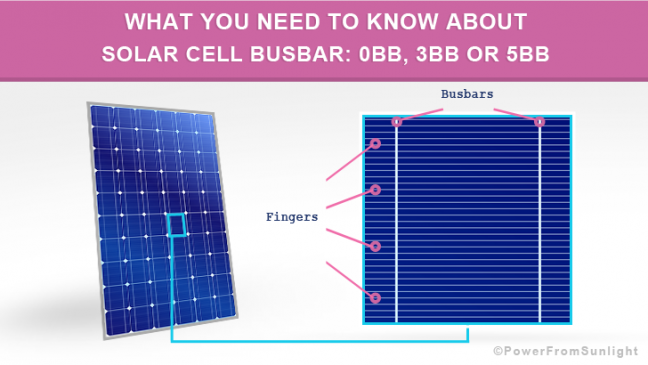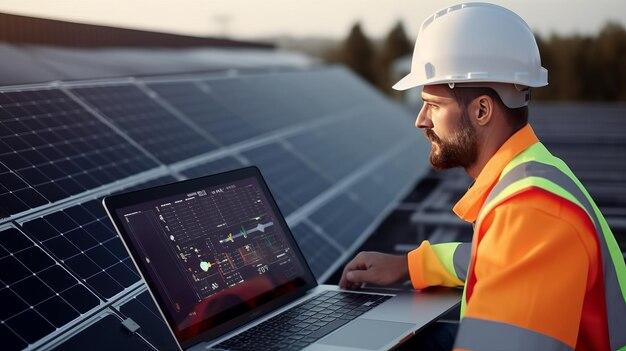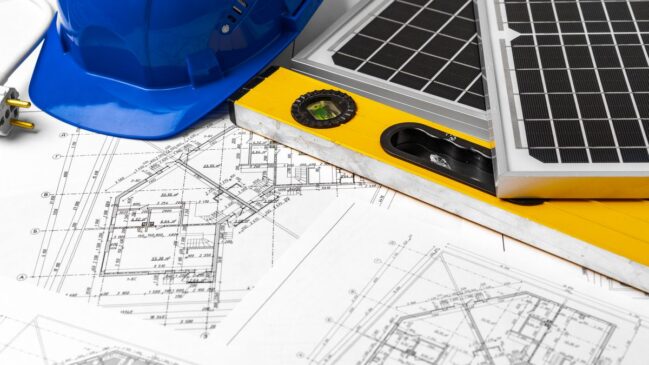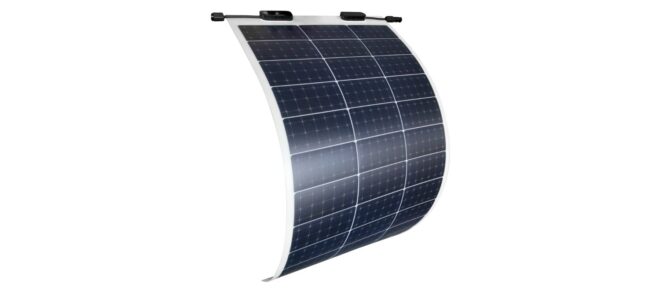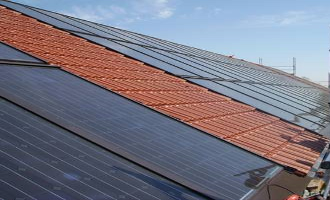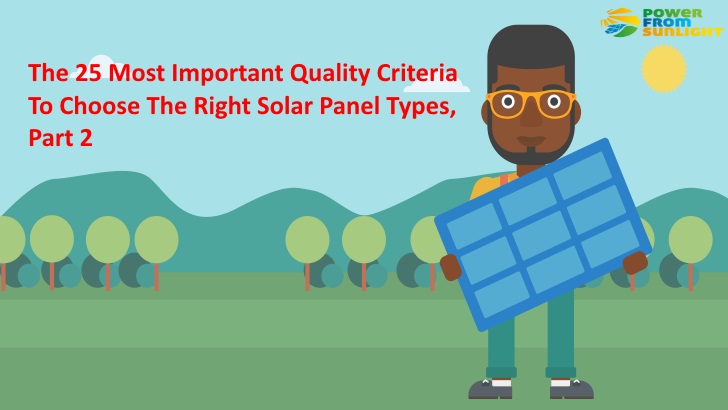
The 25 Most Important Quality Criteria To Choose The Right Solar Panel Types, Part 2
To objectively choose the right solar panel types, a solar panel datasheet is alone not always helpful, because it contains different information depending on the manufacturer.
In the first part of this article, we have discussed the first ten important quality criteria to choose the right solar panel types. For more information see this article.
The second part provides you with the last fifteen of the 25 most important quality criteria, which you should know before you choose the right solar panel types.
Most Important Quality Criteria To Choose The Right Solar Panel Types
1. The country of production
German, Japanese and American solar panel manufacturers enjoy a good reputation and can, therefore, be shortlisted.
Chinese modules
There are some large established manufacturers, which deliver high-quality solar PV panels. However, lots of new companies are springing up like mushrooms in the market.
These give a good reason to be skeptical. Here you have to investigate their modules thoroughly and to compare them with other well-known companies.
2. Solar cell manufacturers
Which solar photovoltaic cells are installed in the modules, here there are significant quality differences.
3. Solar panel types
Depending on the used solar photovoltaic cell, modules have different advantages.
Monocrystalline have the highest solar panel efficiency. Compared to monocrystalline, polycrystalline solar panels have a short, energetic amortization period and are cheaper.
Thin film solar panels are the lightest and are suitable for the installation on flat roofs. They also have a better low-light performance compared to crystalline solar panels.
4. Experience
- How long has this solar panel manufacturer existed?
- Is it a new, untested product?
- Are there particularly positive or negative reviews about the solar panel manufacturer (recalls, warranty cases, how were these processed?)
5. Are there reference PV plants?
It is very important! Search on the well-known websites for PV plants with this module type and compare it with other solar PV modules!
6. Performance Ratio
The Performance Ratio (PR) indicates the output of a particular solar PV system in relation to the output of an ideal loss-free solar PV system with the same PV design, nominal power, and location conditions.
It reflects the energy efficiency of all components (PV panels, solar power inverter, cables, etc.), but this is independent of the effectiveness and orientation of Solar PV panels.
In the modern solar PV systems, the PR is between 0,7 and 0,8. A Performance Ratio of 0,8 means that the system loses 20% output. Shading, soiling and increasing module temperature cause a reduction of the output.
To enable objective comparison of different PV modules, it is important to know this performance indicator.
7. The Energy Payback Time (EPBT) of solar panels
The Energetic Payback indicates, how long a PV system/component needs to generate the energy used for its manufacturing. The balance is positive when it is smaller than its life expectancy.
Crystalline solar panels have an energetic payback of 3 to 4 years and thin film solar panels 1 to 2 years.
8. Harvesting factor of solar panels
The harvesting factor indicates, how often the PV system/component brings the energy required for its manufacturing during its life expectancy.
With a lifespan of 30 years, the harvesting factor is 5 to 8 for monocrystalline solar panels, 7 to 14 for polycrystalline solar panels and 9 to 21 for thin film solar panels.
9. Solar Panel Dimensions
When it comes to choosing the solar PV panels, the dimensions length x width play a major role. These should be selected so that the available roof area can optimally be used.
10. The solar panel weight
For the static load of the roof, the solar panel weight is the most important factor.
On the roofs with low load reserve, light panels such as thin film solar panels are recommended.
11. The compatibility with the elevation PV mounting systems
The elevation of solar PV modules on flat roofs leads to a higher output. When you plan an elevation, the compatibility of solar panels with the elevation PV mounting system should be clarified.
12. The Parallel connection of solar cells
Different solar panel manufacturers offer modules with parallel connected solar photovoltaic cells.
The advantage of this technology is that in the case of a partial shading the solar PV panels brings a higher output.
In the event of a series connection of solar cells, a higher voltage can be achieved. This is in particular useful for the small solar PV systems.
13. Modules with white background foil
The module can also be equipped with white background foil. Due to that, a light reflexion occurs. This results in a higher electrical power.
14. Price-performance ratio
There are high-efficiency solar panels that produce better yields than the standard solar PV modules. The manufacturers of these modules demand a higher price.
High prices of solar PV panels are not the criteria when taking a decision; it is necessary to calculate and compare with the ratio of other types of modules regarding whether it is justifiable to pay that extra cost over a given life period of a specific solar PV system.
15. Availability
It is not always that a PV panel type, which you have chosen, is available. Demand for solar PV panels means they are often scarce. Therefore, it is important to make sure before the conclusion of the installation contract that the solar module type is available.


